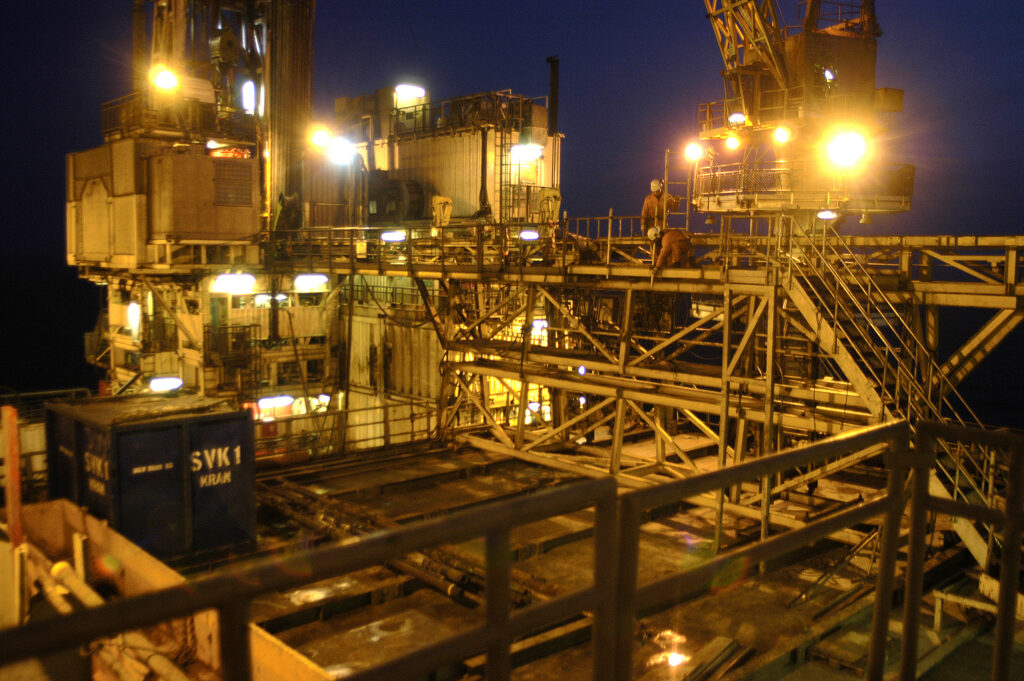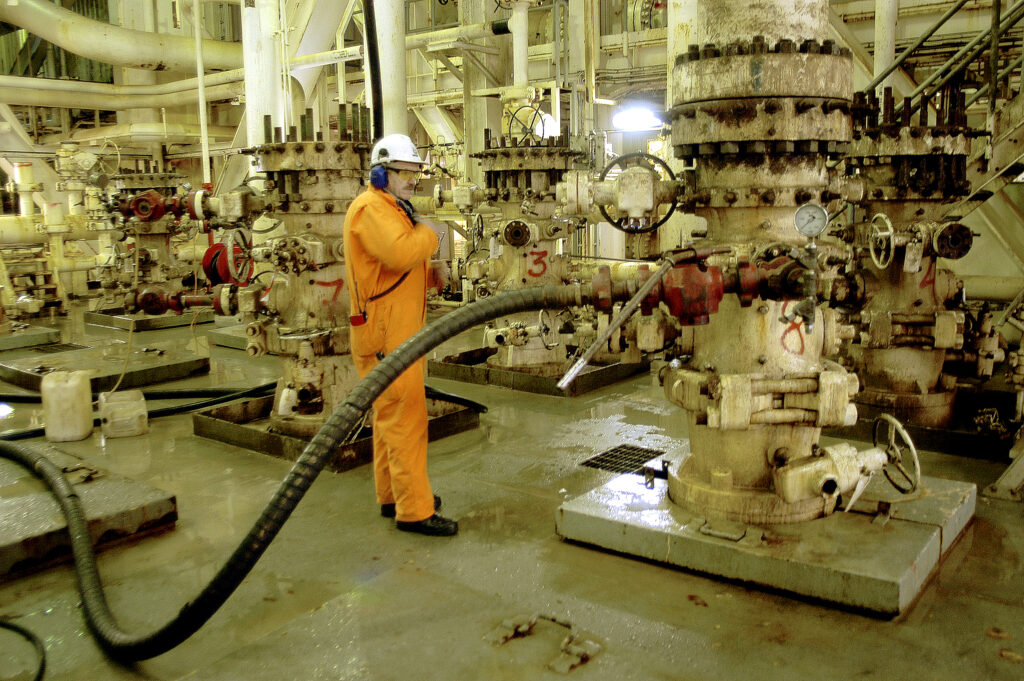Albuskjell 1/6 A on stream

Originally built as a combined drilling, production and accommodation unit. Replacing the accommodation in 1983 increased its capacity from 46 to 96 people. Wells on Albuskjell were plugged and abandoned in 2003-04.
The Albuskjell reservoir extends across Norwegian North Sea blocks 1/6 and 2/4. Located 24 kilometres west of the Ekofisk Complex, 1/6 A produced from 11 wells and was tied back via Albuskjell 2/4 F to Ekofisk 2/4 R by separate oil and gas pipelines. A flare stack was linked to the platform by a bridge.
Process facilities on 1/6 A comprised a separation plant for oil and gas. The gas was then dehydrated. It and the oil were exported in pipelines measuring 24 and 18 inches respectively. Before entering these transport systems, the oil and gas passed through a fiscal metering station to measure the quantities produced.
 Albuskjell 1/6 A. Pipe rack storage area – modul D07. Photo: Jan Tjemsland.
Albuskjell 1/6 A. Pipe rack storage area – modul D07. Photo: Jan Tjemsland.The platform was constructed through a collaboration between Ireland’s Cork Shipyard, OIS, Nylands Verksted, Tangen Verft and Aker Stord in Norway and Germany’s Thyssen. Morco A/S was the drilling contractor. Standing in 70 metres of water, the structure and pipelines weight 25 300 tonnes. The flare stack was 94 metres high above sea level, while the derrick extended to 74 metres.
 Albuskjell 1/6 A. Wellhead before shut down. Photo: Jan Tjemsland.
Albuskjell 1/6 A. Wellhead before shut down. Photo: Jan Tjemsland.